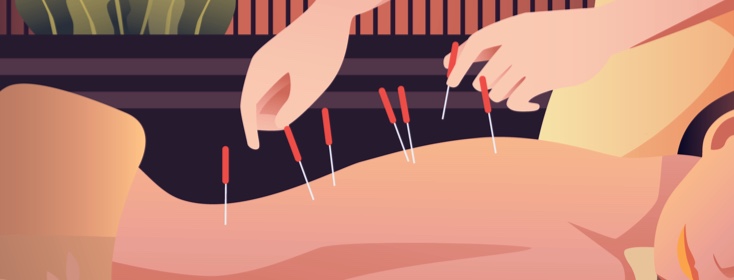Expert Answers: Pain Relief with COPD
Lately, many of our community members have been talking about pain as it relates COPD. So we asked our experts. Check out what they had to say!
Non-pharmaceutiful pain relief for COPD
Do you have any suggestions for non-pharmaceutical approaches to pain relief for chest tightness, pain from wheezing, rib cramping, or any pain related to COPD?
Response from John
 First off, even when using over-the-counter-medicines, it's always a good idea to talk to your doctor about any symptoms you feel and any medicine you are putting into your body. Plus, your doctor might have some advice as to which products and doses would work best for you. That said, one study showed that as many as 40% of people living with COPD report some form of pain, from headaches, sinus pressure, rib cramping, sore chest, or simple random aches and pains. According to the Lung Institute, the most effective over-the-counter medicines used to treat COPD-related pain are non-steroidal anti-inflammatory (NSAID) medicines like aspirin, naproxen, and ibuprofen, or acetaminophen (Tylenol). You can purchase the brand names, although most of these have a variety of generic options at a much lower cost to you. However, there are also other options you can try, if you haven't done so already, and these include avoiding your COPD triggers as best you can, learning breathing exercises, practicing proper breathing technique (breathing right), and exercise or stay physically active as best you can.
First off, even when using over-the-counter-medicines, it's always a good idea to talk to your doctor about any symptoms you feel and any medicine you are putting into your body. Plus, your doctor might have some advice as to which products and doses would work best for you. That said, one study showed that as many as 40% of people living with COPD report some form of pain, from headaches, sinus pressure, rib cramping, sore chest, or simple random aches and pains. According to the Lung Institute, the most effective over-the-counter medicines used to treat COPD-related pain are non-steroidal anti-inflammatory (NSAID) medicines like aspirin, naproxen, and ibuprofen, or acetaminophen (Tylenol). You can purchase the brand names, although most of these have a variety of generic options at a much lower cost to you. However, there are also other options you can try, if you haven't done so already, and these include avoiding your COPD triggers as best you can, learning breathing exercises, practicing proper breathing technique (breathing right), and exercise or stay physically active as best you can.
Response from Leon
 Pain management is an important part of treatment for COPD, yet at times it’s overlooked. Although COPD doesn’t cause pain per se, it can cause chest and muscle pains due to some of the characteristic symptoms associated with COPD.
Pain management is an important part of treatment for COPD, yet at times it’s overlooked. Although COPD doesn’t cause pain per se, it can cause chest and muscle pains due to some of the characteristic symptoms associated with COPD.
COPD can cause pain due to:
- Overinflation of the lungs can occur due to the obstructive nature of the disease. This may cause pressure on the chest wall, the spine, and the diaphragm.
- Osteoporosis, a loss of density in the bones, can result in bone fractures and bone pain.
- Vigorous and uncontrolled coughing spasms may cause strains in your chest muscles or even lead to a broken rib, especially if osteoporosis is present.
- Anxiety resulting from the stress of struggling to breathe may cause a person's pain threshold to decrease and pain sensitivity to increase.
With non-pharmacological methods of pain relief, there is typically no need to worry about addiction or respiratory depression. Some methods of pain control without medication(s) to consider include:
- Pulmonary rehabilitation: This is the best treatment for chest and muscle pain. Pulmonary rehab strengthens the muscles of the chest wall and reduces pain. This approach includes physical therapy, breathing retraining, and emotional support. It can decrease anxiety as well as improve strength and endurance.
- Ice: can be used to reduce swelling and inflammation associated with chronic pain.
- Heat: increases blood flow to the tissues; this works great for arthritis-type pain.
- Massage: can help relax stiff joints and muscles, which in turn, provides pain relief.
- Physical therapy: (as mentioned in pulmonary rehab) provides pain relieving modalities such as ultrasound and electrical nerve stimulation while teaching you more efficient ways to move and better cope with your pain. This may be suitable if no pulmonary rehabilitation program is available in your area.
- Staying Active: In the absence of pulmonary rehabilitation or even physical therapy, devising your own personal approach, in conjunction with your physician, can help to control one's pain.
- Acupuncture: some believe this approach alleviates the pain associated with COPD. Discuss with your physician first.
Pain management for COPD depends on what is causing the pain and how advanced COPD is.
You may benefit from pain management strategies because of both the struggle to breathe and the emotional anxiety of having COPD. If you have COPD and are having significant pain, talk with your doctor about it. If you are struggling emotionally with pain, ask for help. Work closely with your doctor to find the cause of your pain and the best treatment options for you.1-4
Response from Lyn
 Due to an old injury sustained in an auto accident, I’m no stranger to chronic pain. I’m also hesitant to take too many pain killers, so it’s been important to find alternatives. Here are a few of the therapies I’ve tried over the years – with varying degrees of success.
Due to an old injury sustained in an auto accident, I’m no stranger to chronic pain. I’m also hesitant to take too many pain killers, so it’s been important to find alternatives. Here are a few of the therapies I’ve tried over the years – with varying degrees of success.
- Acupuncture: this is one of the first treatments I tried for chronic pain. After researching it, I realized there was a real science behind it and had the potential to offer much relief. Acupuncture is traditional Chinese medicine in which tiny needles are placed in specific areas of your body to relieve pain. Not only did I find it to relieve pain, but it was extremely relaxing. I would often fall asleep as I lay there. It’s very important to have an acupuncturist that is skilled in what they do. You can find a certified acupuncturist at http://www.nccaom.org.
- Massage: Massage certainly can bring temporary relief from pain, especially when used in conjunction with other forms of therapy. You can choose from many different styles of massage based on your needs, as well as likes and dislikes. My personal favorite is a hot stone massage which includes the use of water-heated stones that are placed strategically on the body for optimal muscle relaxation. Other common types are deep tissue, Swedish, Shiatsu, and sports massage. Some also include the addition of aromatherapy, which adds essential oils to the massage oil to promote relaxation. A note of caution however for those with COPD: if you are sensitive to strong odors, aromatherapy may not be for you. In fact, most spas offer the option of unscented oil for those with sensitivities.
- Tai Chi: Another traditional Chinese form of low impact exercise is Tai Chi. It combines slow movements, meditation, and breathing exercises to increase your core muscle strength (which can aid pain relief) and improve balance and posture. For those with COPD, pain is sometimes the result of poor posture and lack of muscle strength, so Tai Chi may be a real benefit. It is sometimes offered in a gym, community center, or senior center.
- Physical Therapy: this is often prescribed by your doctor to help with pain relief due to an injury, decreased mobility, and reduced endurance. The physiotherapy may include strengthening exercises, manual movement of muscles and limbs, balance training, and the use of hot and cold packs to alleviate aches and pains.
- Certain foods: there are foods that due to their inflammatory properties can also aid in the fight against pain. Tumeric, ginger, salmon, blueberries, and pumpkin seeds are just a few. Conversely too much “junk food”, such as refined sugar, saturated fats, refined carbohydrates, and MSG can add to pain and inflammation, so if possible should be avoided or at least limited.

Join the conversation